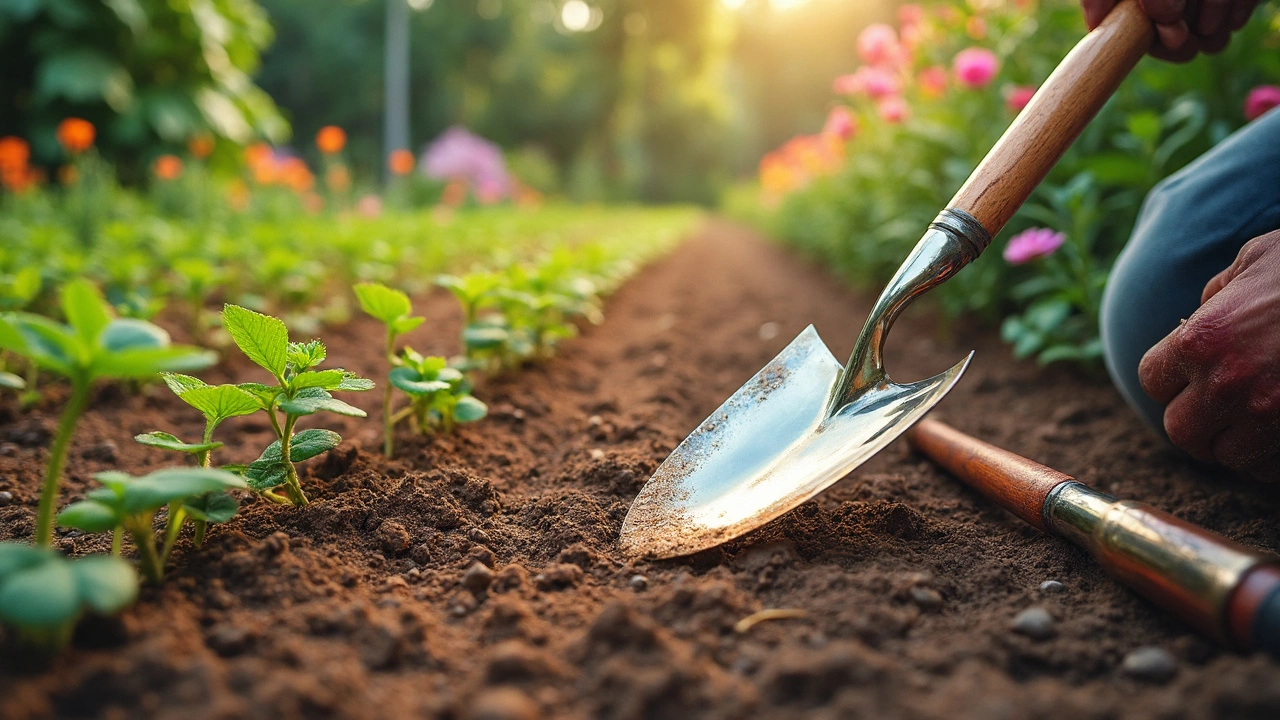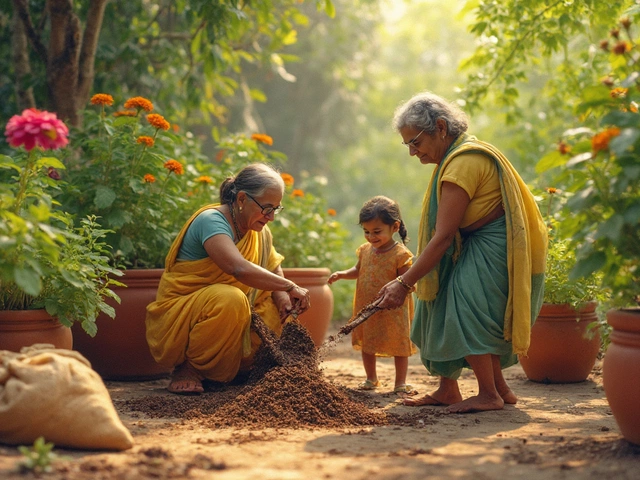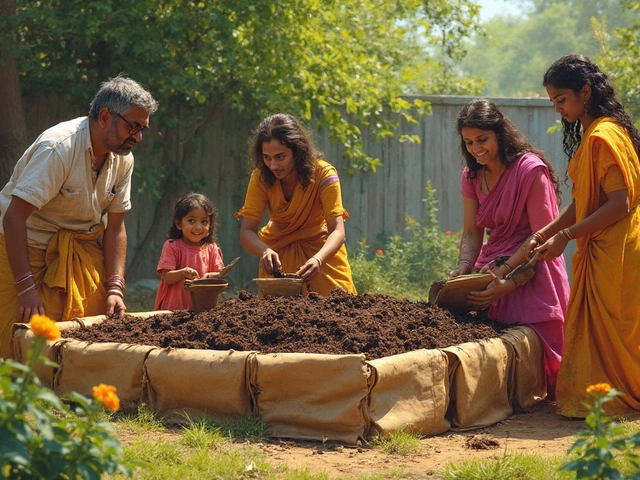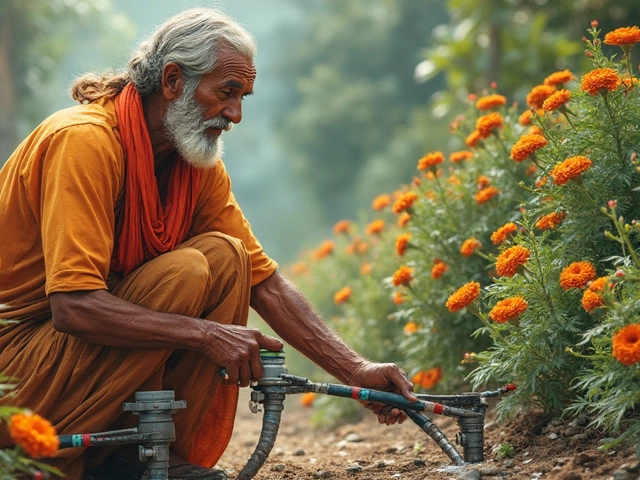So you're looking to start a garden, and you might be wondering, what's the very first thing you should set your eyes upon? Well, it's not seeds or plants. It’s actually something much more foundational—a trusty spade. Before you get excited about planting those tomatoes or those fragrant lavender bushes, you need to break ground. And to do that properly, you need a tool that's as dependable as it is practical.
But why a spade, you ask? Simple: a spade isn’t just a tool—it’s your garden’s best friend. It’s the go-to for digging, lifting, and turning soil. It's how you prepare the plot for everything else. Get a good one, and it’ll last you through countless gardening adventures.
When picking a spade, go for one with a comfortable grip and a sturdy blade. You’ll thank yourself for it later when you're working through soil. And speaking of soil, knowing a bit about your soil type and how a spade can help you handle it could save you loads of trouble down the line. So, start right with a spade, and you’ll set the stage for garden greatness.
- Importance of Proper Tools
- Choosing the Right Spade
- Why a Spade Comes First
- Caring for Your Tools
- Other Must-Haves for Gardeners
- Tips for New Gardeners
Importance of Proper Tools
You wouldn’t try to build a house without a hammer, right? The same rule applies to gardening. Having the proper tools is a game-changer for any gardener. Why waste time and effort when the right tool can make everything so much easier?
Let's break down why the right tools are crucial. For starters, they're designed to make your gardening tasks efficient and less physically demanding. You've got a garden to nurture, and doing things the hard way just isn't smart.
Imagine dealing with dense soil or stubborn roots. A top-quality, robust gardening tool like a spade or a hoe can cut through these challenges without breaking a sweat. On the flip side, a flimsy tool might leave you struggling and frustrated.
Not only do the right tools save energy, but they also last longer. Investing in quality means fewer replacements, which is easier on your wallet in the long run.
Additionally, let’s not forget safety. Proper tools minimize accidents. They've got molded grips for comfort and balanced designs for stability, so your hands and back get some much-needed support.
- Gardener comfort: Reduces strain on the body.
- Efficiency: Completes tasks faster.
- Durability: High-quality tools last longer.
- Safety: Designed to prevent injuries.
Consider this: A British study actually showed that gardening with ergonomic tools can reduce physical strain by up to 30%. Who wouldn't want a little boost like that?
So, the bottom line? Don’t skimp on quality when it comes to garden tools. They’re like your trusty sidekick in this amazing journey to create a beautiful garden space.
Choosing the Right Spade
Picking the perfect spade is like finding the right pair of shoes; it needs to fit just right and serve its purpose effectively. When you're new to gardening or even if you have a garden that's a couple of years old, having a reliable spade is non-negotiable. It’s a key player in the realm of garden tools.
First, consider the size. Do you see yourself tackling lots of hard-packed soil or are you working with soft, easy-to-move dirt? A typical garden spade has a handle that's around 28 to 48 inches long. Shorter handles give you more control, while longer ones offer leverage, which is handy if you’re working in a larger plot.
Next up, let's talk about the blade. The blade's shape and material can make a world of difference. Most blades are made from stainless steel or carbon steel. Stainless steel blades are less prone to rust, making them a great pick if you don’t want too much maintenance. On the other hand, carbon steel blades are often more robust and sharper, perfect for tougher grounds.
Now, don’t forget the grip. You don't want blisters after a day’s work. Rubber or padded grips can make your life a lot more comfortable, especially if you’re planning some serious digging sessions. Test it out if you can, to see how it feels in your hands.
As for the shape, a square-edged spade is classic for slicing through soil and roots, while a rounded one might suit you better for scooping or planting tasks. Think about what you’ll be doing most often and go from there.
Here’s a little bit of fun data for you. Many gardeners believe that investing in a quality spade is worth it—over 60% of avid gardeners prefer buying a slightly more expensive spade for the durability and comfort it provides over time.
So, there you have it! A quick rundown on picking the right spade. With these tips in mind, you'll be ready to hit the ground running—literally.
Why a Spade Comes First
Alright, let’s get into why the spade is the MVP of your gardening toolkit. The moment you decide to cultivate a garden, your very first mission is to wrestle with the soil. Whether your plot is dense clay or loose loam, you need to dig in and turn over the earth to create a bed ready to receive seeds or plants. Simply put, a spade is your best ally for this job.
The history of the spade goes back centuries as a fundamental tool of cultivation. Its design, with its flat, rectangular blade and sturdy handle, hasn’t changed much because it’s incredibly efficient at what it does. Whether you're working in a small urban garden or a sprawling countryside plot, a spade helps you tackle weeds, mix compost into the soil, and even define the shape of your garden beds.
Choosing the right spade is about balancing comfort and durability. Look for a model with a handle that's easy on the hands, especially if you plan on spending long hours digging. A steel blade is often preferred because it cuts through tough soil like a champ. Take into account the size; a large-bladed spade might seem efficient, but something that fits your strength and height will save energy and prevent strain.
Experts often advise that investing in a good-quality spade can enhance your gardening with noticeable ease and efficiency. Statistics reveal that using ergonomic tools can reduce physical strain by up to 30%, making the gardening process more enjoyable.
So, it’s clear why the spade earns its top spot. It’s the entry ticket into the gardening game. Taking that first deep dig with your new spade marks the beginning of your green-thumb journey. Treat it well, and it’ll be by your side, season after season, helping to bring your garden dreams to life.
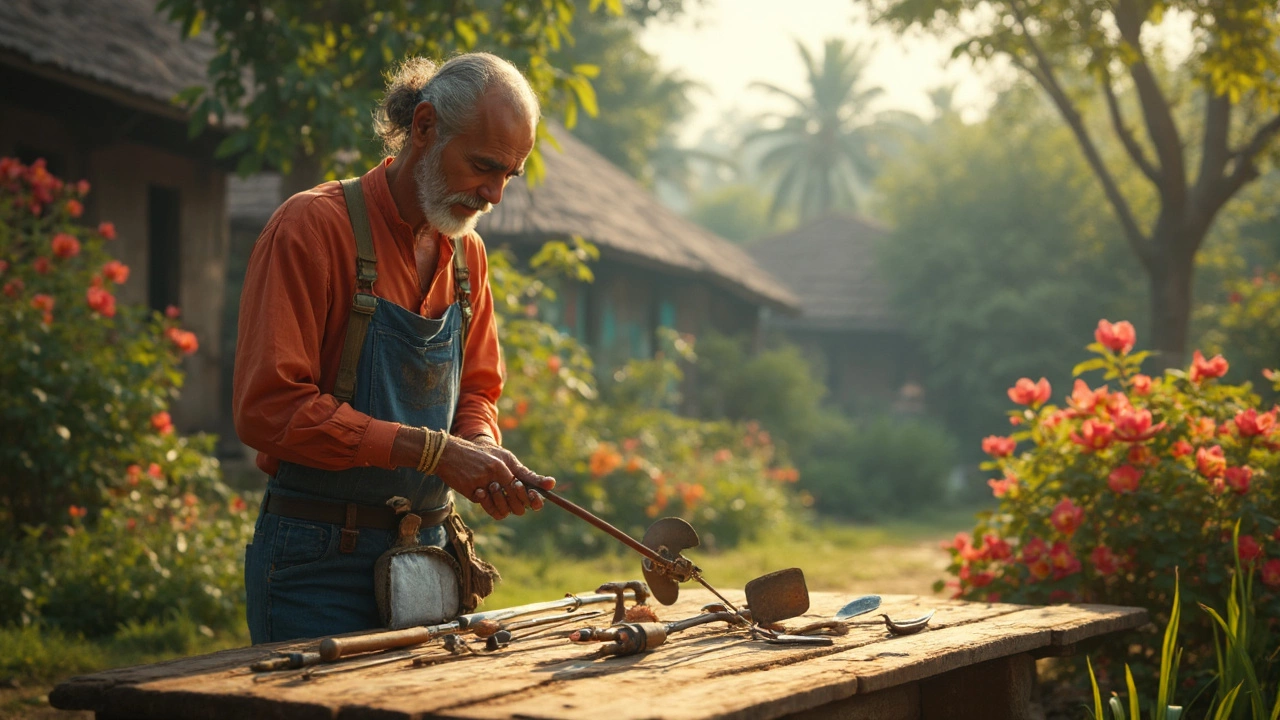
Caring for Your Tools
Alright, so you’ve got the perfect spade, maybe even more essential garden tools, and now you're wondering, how do you keep them in tip-top shape? Think of it like taking care of a car. Regular maintenance not only extends the life of your gear but also makes gardening more enjoyable and less of a hassle.
First off, always clean your tools after use. I know, the last thing you might want to do after a day in the garden is more work, but it makes a huge difference. A simple rinse with water to remove soil can prevent rust and deterioration. For metal parts, dry them completely to avoid rust spots.
Sharpening those tool edges is also crucial. A dull spade isn’t much fun to work with. Every few months, get out a file or a sharpening stone and give the edges some love. If you’ve never done this before, tons of how-to videos can walk you through it step by step.
Remember to check wooden handles for splinters or cracks. Sanding them down and applying a light coat of linseed oil can keep them smooth and strong. It’s a small task that can save you from unwanted blisters and injuries.
- Clean after each use.
- Dry thoroughly before storing.
- Sharpen blades regularly.
- Maintain wooden handles with oil.
Lastly, store your tools properly. Hang them up or place them in a tool shed where they’re protected from rain and sun. A simple pegboard can be a lifesaver in organizing them. Handy tip: Store small tools like pruners in a bucket of sand mixed with a little oil. It keeps them both clean and rust-free.
An organized tool is a happy tool, ready to tackle the gardening tips you’ve got lined up next. Take care of your gear, and it’ll take care of your garden. Plus, you’ll save yourself some cash not having to replace things all the time!
Other Must-Haves for Gardeners
Alright, so you've got your trusty spade ready to go, but that's just the beginning of your journey to being a bona fide gardener. There are a few more tools you’ll need to make your garden thrive and make the whole experience enjoyable rather than a chore.
First up are gardening gloves. I can't stress enough how important these are. Not only do they protect your hands from thorns and splinters, but they also save you from potential blisters during those longer bouts of planting or digging.
Next on the list is a sturdy watering can or a hose with a spray attachment. Proper watering is like giving your plants their much-needed drink. Different plants need different amounts, so make sure your watering tool is versatile.
A good pair of pruning shears is invaluable, especially when it comes to trimming dead or overgrown branches and keeping your plants in tip-top shape. This ensures healthy growth and promotes flowering.
Let's not forget the humble garden trowel. This tool is perfect for transplanting seedlings and digging up stubborn weeds. It’s like a mini version of your spade, allowing for more precise work.
And for the tech-savvy gardener, a simple soil pH tester could make a world of difference. Knowing your soil type and pH can help you choose the right plants and fertilizers, ensuring everything you plant has the best chance to flourish.
Last, consider a garden fork. It's super handy for loosening up soil before planting. It also comes in clutch when you need to turn compost or mix in nutrients.
| Tool | Purpose |
|---|---|
| Gardening Gloves | Protects hands from injuries |
| Watering Can | Efficient and precise watering |
| Pruning Shears | Trimming and cutting branches |
| Garden Trowel | Planting and weeding |
| Soil pH Tester | Determines soil health |
| Garden Fork | Loosens soil, mixes nutrients |
With these tools in hand, you’re well on your way to creating and maintaining a thriving and beautiful garden. Remember, the right tools make all the difference!
Tips for New Gardeners
Just starting your gardening journey? Here’s the lowdown on how to get it right from the get-go. Whether you’re planting herbs in pots or planning a veggie patch, these straightforward tips will help you cultivate a garden you’ll be proud of.
First things first, choose the right spot. Most plants thrive with about six hours of sunlight, so look for a sunny area in your yard or balcony. If space is tight, don't worry—you can use containers or vertical planters. Just make sure your plants get their daily dose of light.
Next, start small. It’s easy to get carried away and plant everything under the sun, but a focused approach works best. Pick a few easy-to-grow vegetables like lettuce, radishes, or beans. They’re pretty much the garden equivalent of training wheels.
When it comes to watering, more isn't always better. Overwatering is a common rookie mistake. It’s like drowning your plants with love. Instead, feel the soil first. If it’s dry two inches down, it’s time to water.
Don’t forget about soil fertility. Plants are like us—they need good food to grow strong. Mix in some compost or well-rotted manure to enrich your soil. If you’re dealing with containers, a high-quality potting mix will do wonders.
- Keep pests in check with natural methods. Encourage beneficial bugs like ladybugs, which love feasting on aphids. And if pests are persistent, a homemade soap spray can keep them at bay without harming the environment.
- Rotate your crops to prevent disease buildup and nutrient depletion. Changing up where you plant particular crops each season helps keep your soil healthy and your harvests abundant.
- Consider companion planting, like growing basil next to tomatoes—it can boost growth and flavor while keeping certain pests away.
Lastly, don’t stress out about mistakes. Even seasoned gardeners face challenges. Whether it’s a plant that didn’t thrive or a pest problem, each hiccup is a chance to learn and improve. So grab your spade, embrace each growing season, and enjoy the green journey!
